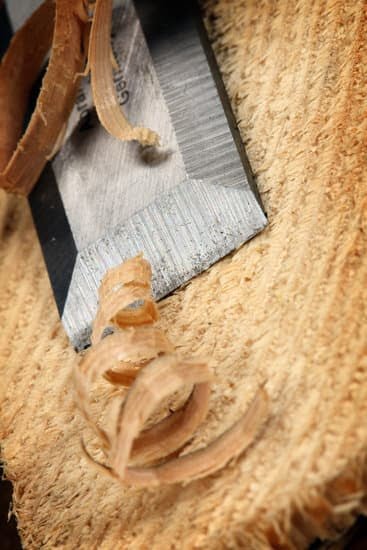Does old varnish on natural woodwork contain lead? Many homeowners are unaware of the potential risks associated with old varnish on natural woodwork, especially when it comes to the presence of lead. In this article, we will explore the historical use of lead in varnishes and paints, the potential health hazards of lead exposure, and how to determine if old varnish contains lead.
Lead is a toxic metal that can cause serious health effects, especially in young children and pregnant women. It has been historically used in various products, including varnishes and paints. Exposure to lead can result in neurological and developmental issues, as well as other health problems. Understanding the potential risks associated with lead exposure is crucial for anyone dealing with old varnish on natural woodwork.
The historical use of lead in varnishes and paints dates back several centuries. While current regulations have restricted the use of lead in these products, many older homes may still have woodwork coated with lead-containing varnish. Therefore, it is important to be aware of the dangers associated with old varnish on natural woodwork and take necessary precautions to ensure safety.
What Is Lead and Its Potential Health Hazards
Lead is a toxic metal that can cause serious health issues, especially in children and pregnant women. Exposure to lead can result in damage to the brain and nervous system, slowed growth and development, learning and behavior problems, as well as hearing and speech impairments.
In adults, lead exposure can lead to high blood pressure, kidney damage, and reproductive problems. It is important to understand the potential health hazards associated with lead exposure, especially when dealing with old varnish on natural woodwork.
Historically, lead was commonly used in varnishes and paints due to its durability and resistance to moisture. However, this has resulted in many older homes having woodwork coated with lead-containing varnish. Over time, the varnish can deteriorate and release lead particles into the air or dust, posing a risk of exposure through inhalation or ingestion.
In order to protect yourself and your family from the potential health hazards of old varnish containing lead on natural woodwork, it is crucial to determine whether the varnish contains lead. This can be done using simple at-home test kits which are available at hardware stores or by hiring a professional testing service. Testing for lead in old varnish is an essential step in ensuring a safe living environment for you and your loved ones.
Historical Use of Lead in Varnishes and Paints
Lead has been used in varnishes and paints for centuries due to its ability to improve durability and drying time. In fact, lead-based paints were commonly used in homes and buildings until the late 1970s when the health hazards associated with lead exposure became more widely recognized. The use of lead in varnishes was also common, especially in the preservation of natural woodwork such as furniture, trim, and doors.
Health Risks of Lead Exposure
Exposure to lead can have serious health implications, particularly for children and pregnant women. Lead poisoning can cause developmental delays, learning difficulties, and behavioral problems in children. In adults, exposure to lead can result in high blood pressure, kidney damage, and reproductive issues. Additionally, lead exposure is linked to an increased risk of cardiovascular disease.
Regulations on Lead Use
However, old varnishes applied before these regulations took effect may still contain lead. It is important for homeowners and renovators to be aware of this potential hazard when dealing with natural woodwork that has old varnish coatings.
Understanding the historical use of lead in varnishes and paints is crucial when assessing the potential risks associated with old varnish on natural woodwork. Homes built before the late 1970s are more likely to have been finished with lead-containing varnishes and paints. Therefore, it is essential to take precautions when handling or renovating such surfaces to mitigate the risk of lead exposure.
How to Determine if Old Varnish Contains Lead
Determining if old varnish on natural woodwork contains lead is important to ensure the safety of individuals who may come into contact with it. Lead exposure can have severe health hazards, especially for children and pregnant women. If you are dealing with old varnish on natural woodwork, there are a few methods you can use to determine if it contains lead:
- Visual Inspection: One of the simplest ways to check for lead in old varnish is through a visual inspection. Look for any signs of cracking, peeling, or chipping on the surface. If the varnish is deteriorating, it may contain lead.
- Lead Testing Kits: Home lead testing kits are available at hardware stores and online. These kits typically include swabs that change color when they come into contact with lead. Follow the instructions carefully to test a small area of the old varnish.
- Laboratory Analysis: For a more accurate assessment, you can send a sample of the old varnish to a certified laboratory for analysis. This method provides detailed information about the presence and concentration of lead in the varnish.
It’s essential to note that simply looking at the color or texture of old varnish does not provide a reliable indication of whether it contains lead. Proper testing methods should be used to confirm the presence of this hazardous substance.
Overall, determining if old varnish contains lead is crucial for taking appropriate safety measures when dealing with natural woodwork. Whether you choose visual inspection, home testing kits, or laboratory analysis, ensuring that your environment is free from lead exposure is essential for protecting your health and well-being.
The Dangers of Lead Exposure Through Old Varnish on Natural Woodwork
Old varnish on natural woodwork may contain lead, which poses a significant health risk, especially if the varnish is deteriorating or being removed. Lead is a toxic metal that can cause serious health issues, particularly in children and pregnant women.
When lead-containing varnish on natural woodwork begins to deteriorate, it creates dust and chips that can be ingested or inhaled, leading to lead poisoning. Given these potential risks, it is crucial for homeowners and contractors to understand the dangers of lead exposure through old varnish on natural woodwork.
Lead is a poisonous substance that can affect almost every organ in the body. Exposure to high levels of lead can result in severe neurological and developmental issues, particularly in young children whose brains are still developing. The effects of lead poisoning can be long-lasting and irreversible. Additionally, pregnant women exposed to lead can experience adverse effects on their unborn child’s development.
Historically, lead was commonly used in varnishes and paints as a pigment and drying agent due to its durability and color-intensifying properties. As a result, many older homes with natural woodwork may have been coated with varnish containing lead. This presents a hazard when renovating or restoring these homes since disturbing the old varnish can release lead particles into the air or onto surfaces where they can be easily ingested.
Methods for Testing for Lead in Old Varnish
Home Testing Kits
One method for testing old varnish for lead is through the use of home testing kits. These kits are available at hardware stores and online, and they typically include swabs that can be used to collect samples from the woodwork.
The swabs contain a solution that changes color in the presence of lead, providing a quick and easy way to determine if the varnish contains this hazardous material. It is important to carefully follow the instructions provided with the testing kit in order to obtain accurate results.
Laboratory Analysis
For a more comprehensive and precise analysis, professional laboratory testing can be conducted. This involves collecting samples of the old varnish from the woodwork and sending them to a certified laboratory for analysis. The trained technicians at the lab will use specialized equipment and techniques to accurately determine the presence of lead in the varnish. While this method may require more time and resources, it provides a thorough assessment of the lead content in the varnish.
Consulting With Experts
In some cases, consulting with experts such as environmental consultants or industrial hygienists may be necessary to properly test for lead in old varnish on natural woodwork. These professionals have the knowledge and experience to conduct thorough assessments and provide guidance on safe testing methods.
They can also offer recommendations for next steps based on the results of the testing, ensuring that any lead-containing varnish is handled appropriately to minimize health risks. Consulting with experts can provide peace of mind when dealing with potential lead exposure from old varnish on natural woodwork.
Safe Removal and Disposal of Lead-Containing Varnish
When it comes to dealing with old varnish on natural woodwork, the potential presence of lead in the varnish raises concerns about safety. Lead exposure can pose serious health hazards, particularly for young children and pregnant women. Therefore, it is crucial to take necessary precautions when removing and disposing of lead-containing varnish.
Before undertaking any removal process, it is important to determine whether the old varnish on natural woodwork contains lead. Testing for lead can be done using DIY test kits or by hiring a professional inspector. Once the presence of lead is confirmed, it is vital to take appropriate safety measures during the removal process to minimize exposure.
Safe removal of lead-containing varnish involves using methods that prevent the generation of dust and fumes containing lead particles. This may include wet scraping, sanding with HEPA filters, or using chemical stripping agents specifically designed for lead paint removal. It is important to wear personal protective equipment such as gloves, goggles, and a respirator during the removal process to avoid inhalation or skin contact with lead particles.
Disposal of lead-containing varnish should also be handled with care to prevent environmental contamination. In many areas, there are specific regulations governing the disposal of hazardous waste such as lead-based products. Proper disposal methods may include sealing the removed varnish in plastic bags, labeling them as hazardous waste, and delivering them to designated collection facilities for safe disposal.
Given the potential risks associated with handling lead-containing varnish, considering alternatives to traditional varnishes and sealants for natural woodwork may be a practical approach. There are safer options available that do not contain harmful substances such as lead and other volatile organic compounds (VOCs), providing a more environmentally friendly solution while also ensuring the safety of occupants in the vicinity of natural woodwork.
Alternatives to Traditional Varnishes and Sealants for Natural Woodwork
When dealing with old varnish on natural woodwork, the potential presence of lead in the varnish is a significant concern. Lead exposure can lead to serious health hazards, particularly for young children and pregnant women.
The historical use of lead in varnishes and paints means that there is a strong possibility that old varnish on natural woodwork does contain lead. Before considering alternatives to traditional varnishes and sealants, it is crucial to understand the risks associated with lead exposure from old varnish.
One alternative to traditional varnishes and sealants for natural woodwork is the use of water-based finishes. These finishes are free from harmful chemicals such as lead and provide a safe and environmentally friendly option for protecting and enhancing wood surfaces. Water-based finishes are available in a wide range of options including clear coats, stains, and paints, allowing for versatility in achieving desired aesthetics while ensuring safety.
Another alternative worth considering is natural oils and waxes for treating natural woodwork. Linseed oil, tung oil, beeswax, and carnauba wax are examples of natural products that can be used to protect wood surfaces without the risk of lead exposure.
These options not only provide effective protection but also enhance the natural beauty of the wood without compromising safety. When looking for alternatives to traditional varnishes and sealants for natural woodwork, it is important to prioritize safety by choosing products that do not contain harmful substances such as lead.
| Alternative | Description |
|---|---|
| Water-Based Finishes | Environmentally friendly option that is free from harmful chemicals like lead. |
| Natural Oils and Waxes | Products such as linseed oil, tung oil, beeswax, and carnauba wax offer effective protection without risk of lead exposure. |
Conclusion and Recommendations for Ensuring Safety When Dealing With Old Varnish on Natural Woodwork
In conclusion, the presence of lead in old varnish on natural woodwork is a serious concern due to its potential health hazards. The historical use of lead in varnishes and paints means that older homes, furniture, and fixtures may still contain this toxic substance. The dangers of lead exposure through old varnish should not be underestimated, especially for children and pregnant women. Therefore, it is crucial to take the necessary precautions when dealing with old varnished woodwork.
To determine if old varnish contains lead, testing methods such as EPA-approved test kits or professional analysis can provide accurate results. If lead is present, safe removal and disposal procedures must be followed to prevent further exposure. It may also be prudent to consider alternatives to traditional varnishes and sealants for natural woodwork, such as non-toxic and environmentally friendly options.
Overall, ensuring safety when dealing with old varnish on natural woodwork involves awareness, testing for lead content, safe removal procedures, and consideration of alternative products. By taking these measures, individuals can protect themselves and their families from the potential risks associated with lead exposure from old varnish. It is important for homeowners, contractors, and restoration professionals to prioritize safety when dealing with this issue.
Frequently Asked Questions
Does Old Wood Varnish Contain Lead?
Old wood varnish can potentially contain lead, especially if it was manufactured before laws were enacted to restrict the use of lead in household products. To determine if old wood varnish contains lead, it is important to conduct a lab test or use an at-home lead testing kit specifically designed for this purpose.
Does Lacquer Contain Lead?
Lacquer does not typically contain lead, as it is a clear or colored wood finish that dries by solvent evaporation. However, some older lacquer formulations may have contained lead. To confirm whether a specific lacquer product contains lead, it is advisable to consult the manufacturer’s safety data sheet (SDS) or contact them directly for information.
How Do You Test for Lead in Wood Stain?
Testing for lead in wood stain involves using a lead testing kit that is specifically designed for detecting lead in surfaces such as paint, varnish, and stains. These kits typically include swabs that change color when they come into contact with lead, providing a visual indicator of its presence.
It is important to follow the instructions provided with the testing kit carefully to obtain accurate results and take appropriate safety precautions when handling potentially lead-containing materials.

Hi everyone! I’m a woodworker and blogger, and this is my woodworking blog. In my blog, I share tips and tricks for woodworkers of all skill levels, as well as project ideas that you can try yourself.





